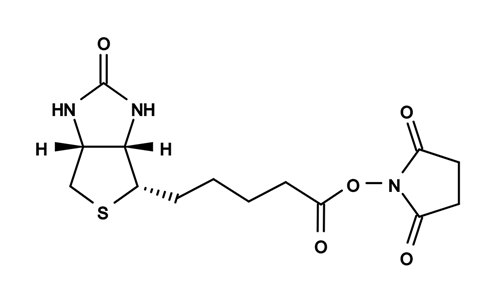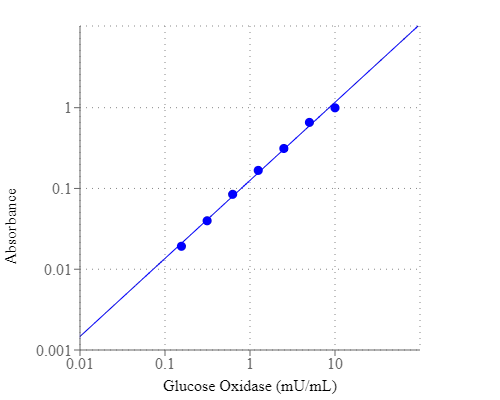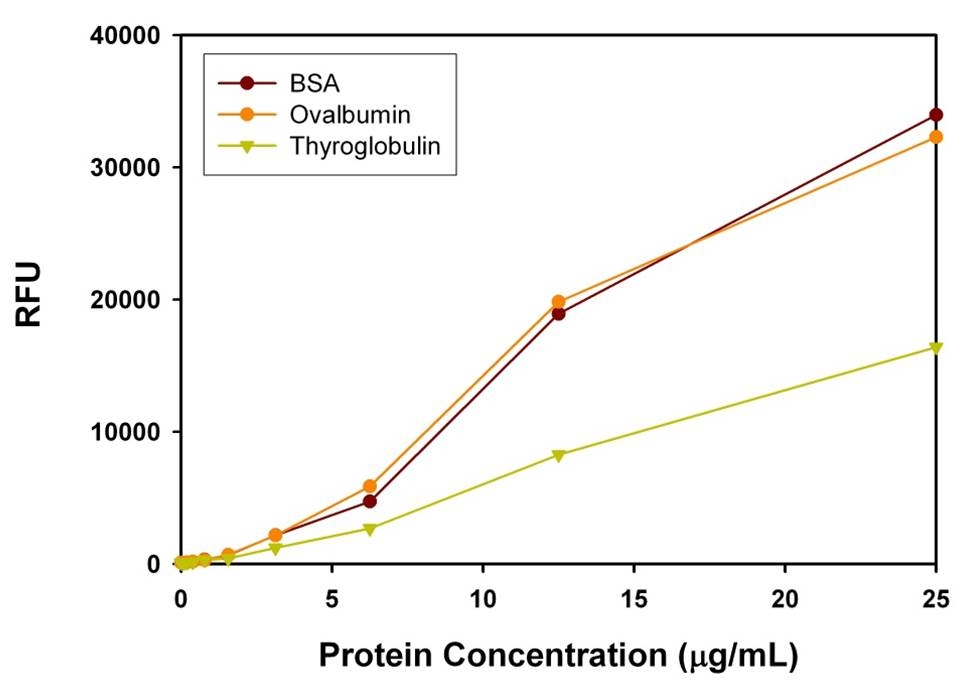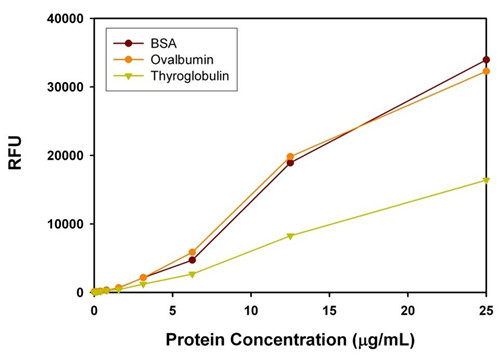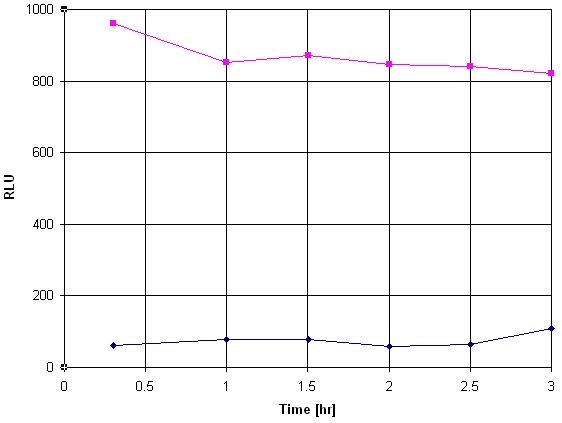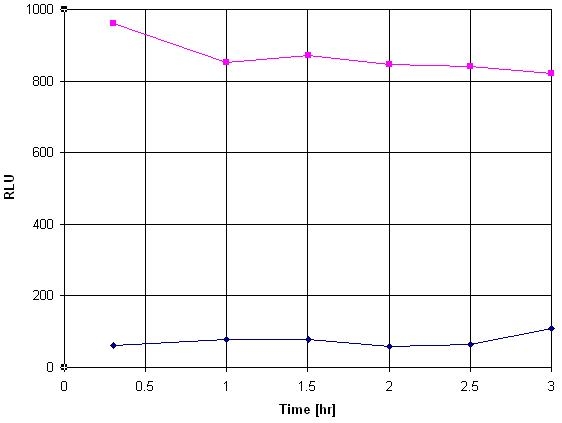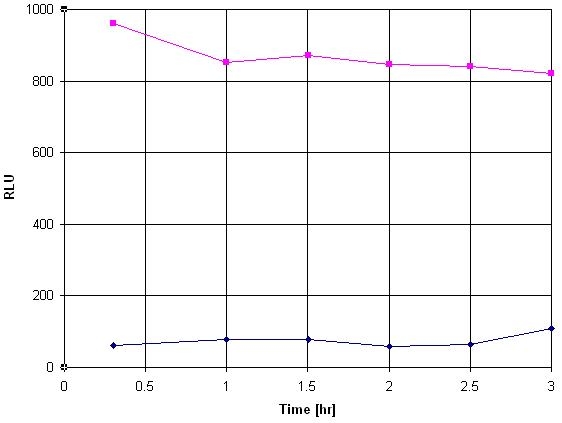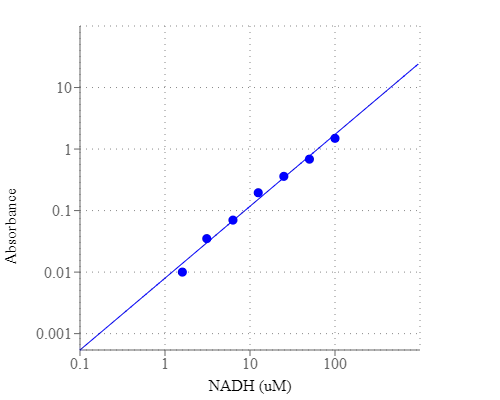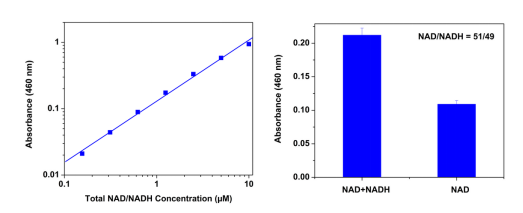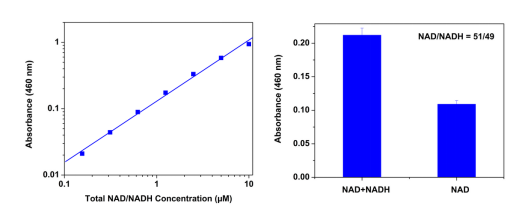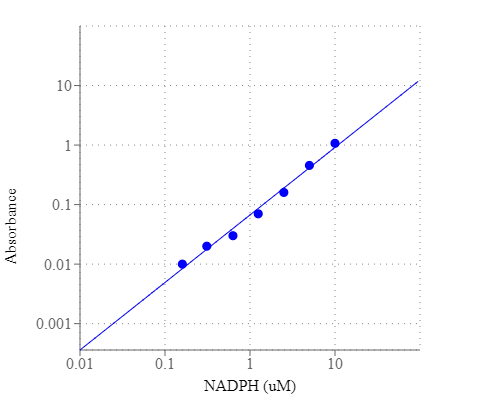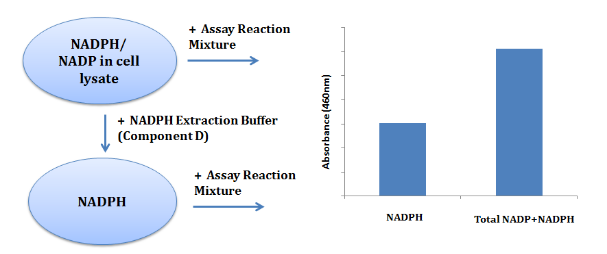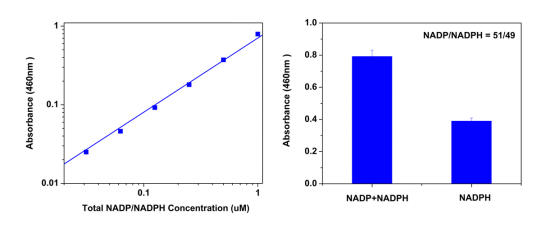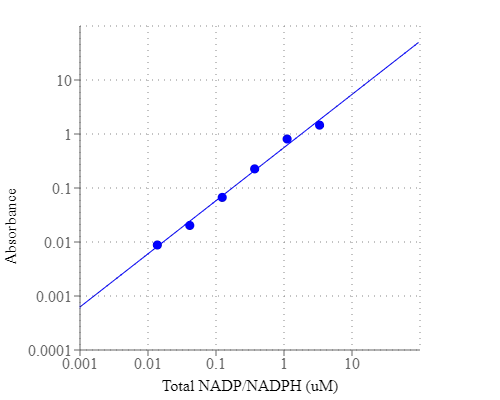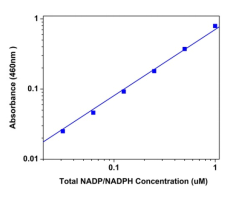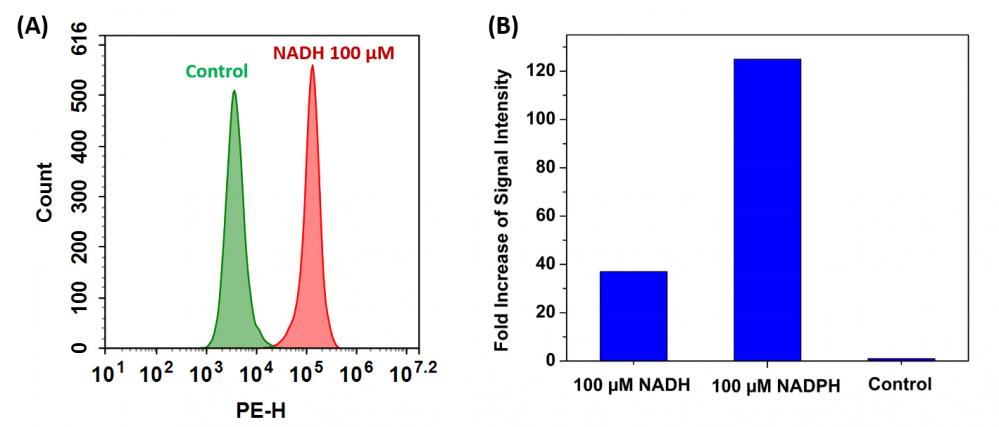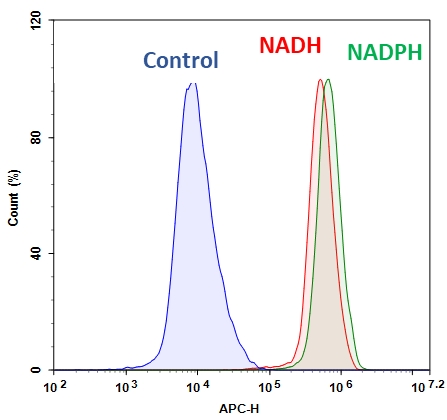- 乳糖/D-半乳糖[快速]检测试剂盒
-
英文名:Lactose/Sucrose/D-Glucose Assay Kit
-
货号:K-LACGAR
-
规格:115 assays per kit
- Very rapid reaction due to inclusion of galactose mutarotase (patented technology PCT / IE2004 / 00170)
- Very competitive price (cost per test)
- All reagents stable for > 2 years after preparation
- Mega-Calc™ software tool is available from our website for hassle-free raw data processing
- Standard included
- Ensure that you have tested the standard sample that is supplied with the Megazyme test kit.
- Send the results of the kit standard, blank samples and the results obtained for your sample, in the relevant MegaCalc spreadsheet (if available) to Megazyme (cs@megazyme.com). Where available the relevant MegaCalc spreadsheet can be downloaded from where the product appears on the Megazyme website.
- State the kit lot number being used (this is found on the outside of the kit box).
- State which assay format was used (refer to the relevant page in the kit booklet if necessary).
- State exact details of any modifications to the standard procedure that is provided by Megazyme.
- State the sample type and describe the sample preparation steps if applicable.
- Sodium borohydride (Sigma S-9125)
- 50 mM NaOH
- 0.2 M acetic acid
- The easiest method is to use a microplate reader that has a path-length conversion capability (i.e. the microplater reader can detect the path-length of each well and convert the individual readings to a 1 cm path-length). This will allow values to be calculated using the MegaCalc calculation software which can be found where the product is located on the Megazyme website.
- Perform a standard curve of the analyte on each microplate that contains test samples and calculate the result of the test samples from the calibration curve (concentration of analyte versus absorbance).
- Perform a standard curve of the analyte in both the cuvette format (i.e. with a 1 cm path-length) and the 96-well microplate format and use these results to obtain a mean conversion factor between the cuvette values and the microplate values. Subsequent assays in the microplate format can then be converted from the calculated conversion factor.
市场价: 5700元
乳糖/D-半乳糖[快速]检测试剂盒
Megazyme低聚半乳糖和半乳糖检测试剂盒采用专利技术,在试剂盒中加入半乳糖变旋酶,可快速催化限速变旋步骤,室温下5分钟即可获得检测结果。试剂盒规格:115次方法:分光光度计,340nm 反应时间: 5分钟检测限: 2.96mg/L 样品类型:牛奶、乳制品(如奶油、奶粉、乳清粉、奶酪、炼乳和酸奶)、含乳食品(如保健食品、焙烤食品、婴幼儿食品、巧克力、糖果和冰淇淋)、食品添加剂、饲料、化妆品、医药及其他物料。方法认证: 通过AOAC、NBN、DIN、GOST以及德国、荷兰、瑞士和奥地利的认证.
分析物意义:常见加工食品组分,在某些情况下,精确的数值很重要,如 “无乳糖”产品
Megazyme检测试剂盒优点:K-LACGAR试剂盒反应快(室温,5min)、试剂稳定
The Lactose/Galactose (Rapid) test kit is used for the rapid test of lactose, D-galactose and L-arabinose in food and plant products. Galactose dehydrogenase can be used the measurement and analysis of both D-galactose and L-arabinose. Suitable for the analysis of lactose in “low-lactose” or “lactose-free” samples which contain high levels of monosaccharides.
UV-method for the determination of Lactose and D-Galactose in
foodstuffs, beverages and other materials
Principle:
(β-galactosidase)
(1) Lactose + H2O → β-D-galactose + D-glucose
(galactose mutarotase)
(2) α-D-Galactose ↔ β-D-galactose
(β-galactose dehydrogenase)
(3) β-D-Galactose + NAD+ → D-galactonic acid + NADH + H+
Kit size: 115 assays
Method: Spectrophotometric at 340 nm
Reaction time: ~ 15 min
Detection limit: 2.96 mg/L (lactose)
Application examples:
Milk, dairy products (e.g. cream, milk / whey powder, cheese,
condensed milk and yogurt), foods containing milk (e.g. dietetic foods,
bakery products, baby food, chocolate, sweets and ice-cream), food
additives, feed, cosmetics, pharmaceuticals and other materials
(e.g. biological cultures, samples, etc.)
Method recognition:
Methods based on this principle have been accepted by AOAC, NBN,
DIN, GOST and IDF
Advantages
Q1. Should the pH of the sample be adjusted even for samples in acidic media?
The pH of the assay solution after the sample is added should be the same as that of the assay buffer that is supplied with the kit.
Low sample volumes (e.g. 0.1 mL) are not likely to affect the pH of the assay solution and therefore may not require pH adjustment.
Samples above 0.1 mL are more likely to affect the pH of the assay solution and therefore the pH of these samples should be adjusted as described in the data booklet, prior to addition to the assay.
Q2. Why is the borohydride reduction step required in procedure B?
Procedure B is required for “low-lactose” or “lactose-free” samples containing high levels of monosaccharides. Generally, these types of samples contain high levels of “free” galactose which causes a high background and reduces the dynamic range available to measure the galactose that is released from lactose in the test. To avoid this the borohydride step is used to reduce the free galactose.
Q3. Sometimes a negative absorbance change is obtained for the blank samples, is this normal? Should the real value (negative absorbance change) or “0” be used in the calculation of results?
Sometimes the addition of the last assay component can cause a small negative absorbance change in the blank samples due to a dilution effect and in such cases it is recommended that the real absorbance values be used in the calculation of results.
Q4. There is an issue with the performance of the kit; the results are not as expected.
If you suspect that the Megazyme test kit is not performing as expected such that expected results are not obtained please do the following:
Q5. I have a high level of monosaccharides in my sample which is causing a high background level before I measure released monosaccharides. Is there a method to remove the initial monosaccharides and reduce the background level?
Instead of the normal Carrez sample treatment, 1 mL of milk is added to 4 mL of water and 1 mL of 10 mg/mL sodium borohydride (dissolved in 50 mM NaOH and less than 5 hours old). This solution is incubated in a closed plastic container at 40˚C for 30 min, after which it is neutralised by the addition of 2.5 mL of 0.2 M acetic acid, and then simply filtered through Whatman No. 1 filter paper. The extract, that will be hazy, is analysed without any further treatment, and 0.2 mL per assay should be used (according to the normal procedure). Although the samples are all hazy, this haze is stable in the assay and contributes very little to the absorbance.
In the assay the borohydride reduces all reducing sugars in the milk to their sugar alcohols, i.e. glucose goes to sorbitol, galactose goes to galactitol, and the residual lactose that we are interested in goes to lactitol. Then the usual beta-galactosidase in the kit hydrolyses the produced lactitol into galactose and sorbitol. However, as the borohydride has been neutralised at this stage, the galactose remains as galactose, and thus can be acted upon and quantified by the galactose dehydrogenase.
The extra reagents (to K-LACGAR) that are required to perform such analyses are:
Note: After borohydride reduction of the sample the incubation step with beta-galactosidase should be increased to 1 hour.
Q6. Can K-LACGAR be used for the reliable detection of lactose in bakery products at a level of approximately 100 mg per 100g?
Yes, this is possible. Here are two options for sample preparation methods for pastry products:
1. Mill or homogenise sample materials. Weigh out a representative sample and extract with water (heated to 60˚C if necessary). Quantitatively transfer to a volumetric flask and dilute to the mark with distilled water. Mix, filter and use the appropriately diluted, clear solution for the assay.
Alternatively the sample can be treated with Carrez reagents after the extraction with water:
2. Mill or homogenise sample materials. Accurately weigh approx. 1 g of into a 100 mL volumetric flask, add approx. 40 mL of distilled water, mix and store at 60˚C for 15 min with occasional swirling. Add 2 mL of Carrez II solution and mix. Add 2 mL of Carrez I solution and mix. Add 4 mL of 100 mM NaOH solution and mix vigorously. Dilute to volume with distilled water and mix thoroughly. Filter an aliquot of the solution through Whatman No. 1 filter paper.
Discard the first few mL of filtrate. Use the clear filtrate (sample solution) in the assay. Alternatively centrifuge in a microfuge tube at 13000 x rpm and using the clear supernatant in the assay.
The procedures given here can be modified to suit the sample, e.g. the dilution effect of the lactose in the sample can be reduced by extracting the sample in a lower volume of water so that the final concentration of lactose is detectable by the kit. This would need to be assessed by the user.
Q7. The detectable range of lactose is 0.008 – 0.16 g/L using a 1 mL sample but the detection limit is given as 0.00296 g/L for lactose? Why is the ”limit of detection” of your method different from the minimum value of the detectable range?
The linear range of 0.008 – 0.16 g/L is based on the recommended minimum absorbance change of 0.1, however some users are comfortable working below this level hence the limit of detection is based on a 1 mL sample volume and minimum absorbance change of 0.02. The sample volume can be altered; for samples containing low concentrations of lactose the sample volume can be increased to up to 1 mL however the distilled water volume must be altered accordingly so that the final assay volume is not altered, otherwise the calculation will be affected (see page 7 of the K-LACGAR booklet). For concentrated samples these should be diluted in distilled water and the dilution factor included into the calculation.
Q8. Is it possible to measure at a higher wavelength than 340 nm?
It is possible to measure the K-LACGAR reactions at 365 nm. In this instance the extinction coefficient of NADH alters from 6300 [L x mol-1 x cm-1] to 3400 [L x mol-1 x cm-1] and this must be accounted for in the calculation of D-glactose and lactose. The calculations for measurements recorded at 365 nm are shown below.
![乳糖/D-半乳糖[快速]检测试剂盒 Lactose/Sucrose/D-Glucose Assay Kit 货号:K-LACGAR Megazyme中文站](http://www.harlanteklad.cn/wp-content/uploads/2021/12/20211201_61a77e5fae904.jpg)
Note: Alternatively the MegaCalc application may be used for easy processing of raw data values, however if the MegaCalc application is used for calculations recorded at 365 nm then the calculated values (g/L) must be multiplied by 1.8529.
Q9. Can K-LACGAR be used to measure arabinose?
This kit can be used as described in the format below to measure L-arabinose but not D-arabinose:
FORMAT:
Wavelength: 340 nm
Cuvette: 1 cm light path (glass or plastic)
Temperature: ~ 25°C
Final Volume: 2.72 mL
Sample solution: 4 – 120 μg of L-arabinose per cuvette
Read against air: without cuvette in light path
![乳糖/D-半乳糖[快速]检测试剂盒 Lactose/Sucrose/D-Glucose Assay Kit 货号:K-LACGAR Megazyme中文站](http://www.harlanteklad.cn/wp-content/uploads/2021/12/20211201_61a77e64edb44.jpg)
* for example with a plastic spatula or by gentle inversion after closing the cuvette with a cuvette cap or Parafilm®.
** if this “creep” rate is greater for the sample than for the blank, extrapolate the absorbances (sample and blank) back to the time of addition of suspension 5.
CALCULATION:
Determine the absorbance difference (A2-A1) for both blank and sample. Subtract the absorbance difference of the blank from the absorbance difference of the corresponding sample, thereby obtaining DA.
The concentration of arabinose can be calculated as follows:
![]()
where:
V = final volume [mL]
MW = molecular weight of arabinose [g/mol]
ε = extinction coefficient of NAD+ at 340 nm
= 6300 [L x mol-1 x cm-1]
d = light path [cm]
v = sample volume [mL]
![乳糖/D-半乳糖[快速]检测试剂盒 Lactose/Sucrose/D-Glucose Assay Kit 货号:K-LACGAR Megazyme中文站](http://www.harlanteklad.cn/wp-content/uploads/2021/12/20211201_61a77e6c5731c.jpg)
If the sample has been diluted in addition to the dilution during preparation, the result must also be multiplied by the additional dilution factor, F.
When analysing solid and semi-solid samples which are weighed out for sample preparation, the content (g/100 g) is calculated from the amount weighed as follows:
![乳糖/D-半乳糖[快速]检测试剂盒 Lactose/Sucrose/D-Glucose Assay Kit 货号:K-LACGAR Megazyme中文站](http://www.harlanteklad.cn/wp-content/uploads/2021/12/20211201_61a77e72c0bb6.jpg)
Q10. How do I know which procedure to use for my sample(s)?
As a general rule: Procedure A is used for samples that are known to contain low levels of free galactose. Procedure B is used for samples that are known to contain high levels of free galactose. If the free galactose content of a sample is unknown it is recommend that the galactose is measured as per the galactose assays in Procedure A.
For “lactose free” samples it is generally recommended that procedure B is used to maximise the absorbance range and enable the sensitive detection of lactose.
“Lactose free” dairy products have usually been processed whereby lactose in the original sample has been hydrolysed to glucose and galactose. These samples will contain high levels of free galactose and should be processed using procedure B. Some samples will be “lactose free” because the original sample never contained lactose so, assuming that the free galactose level is low, these samples can be processed using procedure A.
Q11. Is there a procedure to test solid samples using PROCEDURE B: (For “low-lactose” or “lactose-free” samples containing high levels of monosaccharides)?
Step 1: Add 1 g of sample (or homogenised sample) to 4 mL of water, mix then add 1 mL of 10 mg/mL sodium borohydride (dissolved in 50 mM NaOH and less than 5 hours old). Incubate this solution in a sealed plastic container at 40°C for 30 min then neutralise by the addition of 2.5 mL of 0.2 M acetic acid. Transfer all of the borohydride reduced sample (~ 8.5 mL) to a 10 mL volumetric flask and make the final volume to 10 mL with distilled water. Filter through Whatman No. 1 filter paper or centrifuge in a microfuge at 13000 x g and use the filtrate or supernatant directly in the assay or with an appropriate dilution in distilled water (if required). The filtrate may be hazy but this is stable in the assay and contributes very little to the absorbance. Typically use a sample volume of 0.2 mL in Step 2 of PROCEDURE B.
For analysis of results the dilution is 1 and the concentration of the prepared sample is 100 g/L (i.e. 1 g prepared in 10 mL).
Q12. How can I work out how much sample to extract and what dilution of my sample should be used in the kit assay?
Where the amount of analyte in a liquid sample is unknown, it is recommended that a range of sample dilutions are prepared with the aim of obtaining an absorbance change in the assay that is within the linear range.
Where solid samples are analysed, the weight of sample per volume of water used for sample extraction/preparation can be altered to suit, as can the dilution of the extracted sample prior to the addition of the assay, as per liquid samples.
Q13. I have some doubts about the appearance/quality of a kit component what should be done?
If there are any concerns with any kit components, the first thing to do is to test the standard sample (control sample) that is supplied with the kit and ensure that the expected value (within the accepted variation) is obtained before testing any precious samples. This must be done using the procedure provided in the kit booklet without any modifications to the procedure. If there are still doubts about the results using the standard sample in the kit then send example results in the MegaCalc spread sheet to your product supplier (Megazyme or your local Megazyme distributor).
Q14. Can the test kit be used to measure biological fluids and what sample preparation method should be used?
The kit assay may work for biological fluids assuming that inositol is present above the limit of detection for the kit after any sample preparation (if required). Centrifugation of the samples and use of the supernatant directly in the kit assay (with appropriate dilution in distilled water) may be sufficient. However, if required a more stringent sample preparation method may be required and examples are provided at the following link:http://www.megazyme.com/docs/analytical-applications-downloads/biological_samples_111109.pdf?sfvrsn=2
The test kit has not been tested using biological fluids as samples because it is not marketed or registered as a medical device. This will therefore require your own validation.
Q15. Can the manual assay format be scaled down to a 96-well microplate format?
The majority of the Megazyme test kits are developed to work in cuvettes using the manual assay format, however the assay can be converted for use in a 96-well microplate format. To do this the assay volumes for the manual cuvette format are reduced by 10-fold. The calculation of results for the manual assay format uses a 1 cm path-length, however the path-length in the microplate is not 1 cm and therefore the MegaCalc spreadsheet or the calculation provided in the kit booklet for the manual format cannot be used for the micropalate format unless the microplate reader being used can.
There a 3 main methods for calculation of results using the microplate format:
Q16. Can the sensitivity of the kit assay be increased?
For samples with low concentrations of analyte the sample volume used in the kit assay can be increased to increase sensitivity. When doing this the water volume is adjusted to retain the same final assay volume. This is critical for the manual assay format because the assay volume and sample volume are used in the calculation of results.
Q17. How much sample should be used for the clarification/extraction of my sample?
The volume/weight of sample and total volume of the extract can be modified to suit the sample. This will ultimately be dictated by the amount of analyte of interest in the sample and may require empirical determination. For low levels of analyte the sample:extract volume ratio can be increased (i.e. increase the sample and/or decrease the total extraction volume).
Alternatively, for samples with low concentrations of analyte, a larger sample volume can be added to the kit assay. When altering the sample volume adjust the distilled water volume added to the assay accordingly so that the total assay volume is not altered.
Q18. When using this kit for quantitative analysis what level of accuracy and repeatability can be expected?
The test kit is extremely accurate – at Megazyme the quality control criteria for accuracy and repeatability is to be within 2% of the expected value using pure analytes.
However, the level of accuracy is obviously analyst and sample dependent.
Q19. Can the sensitivity of the kit assay be increased?
Yes. Samples with the lower concentrations of analyte will generate a lower absorbance change. For samples with low concentrations of analyte, a larger sample volume can be used in the assay to increase the absorbance change and thereby increase sensitivity of the assay. When doing this the increased volume of the sample should be subtracted from the distilled water volume that is added to the assay so that the total assay volume is unaltered. The increase sample volume should also be accounted for when calculating final results.
Q20. Must the minimum absorbance change for a sample always be at least 0.1?
No. The 0.1 change of absorbance is only a recommendation. The lowest acceptable change in absorbance can is dictated by the analyst and equipment (i.e. pipettes and spectrophotometer) and therefore can be can be determined by the user. With accurate pipetting, absorbance changes as low as 0.02 can be used accurately.
If a change in absorbance above 0.1 is required but cannot be achieved due to low concentrations of analyte in a sample, this can be overcome by using a larger sample volume in the assay to increase the absorbance change and thereby increase sensitivity of the assay. When doing this the increased volume of the sample should be subtracted from the distilled water volume that is added to the assay so that the total assay volume is unaltered. The increase sample volume should also be accounted for when calculating final results.






